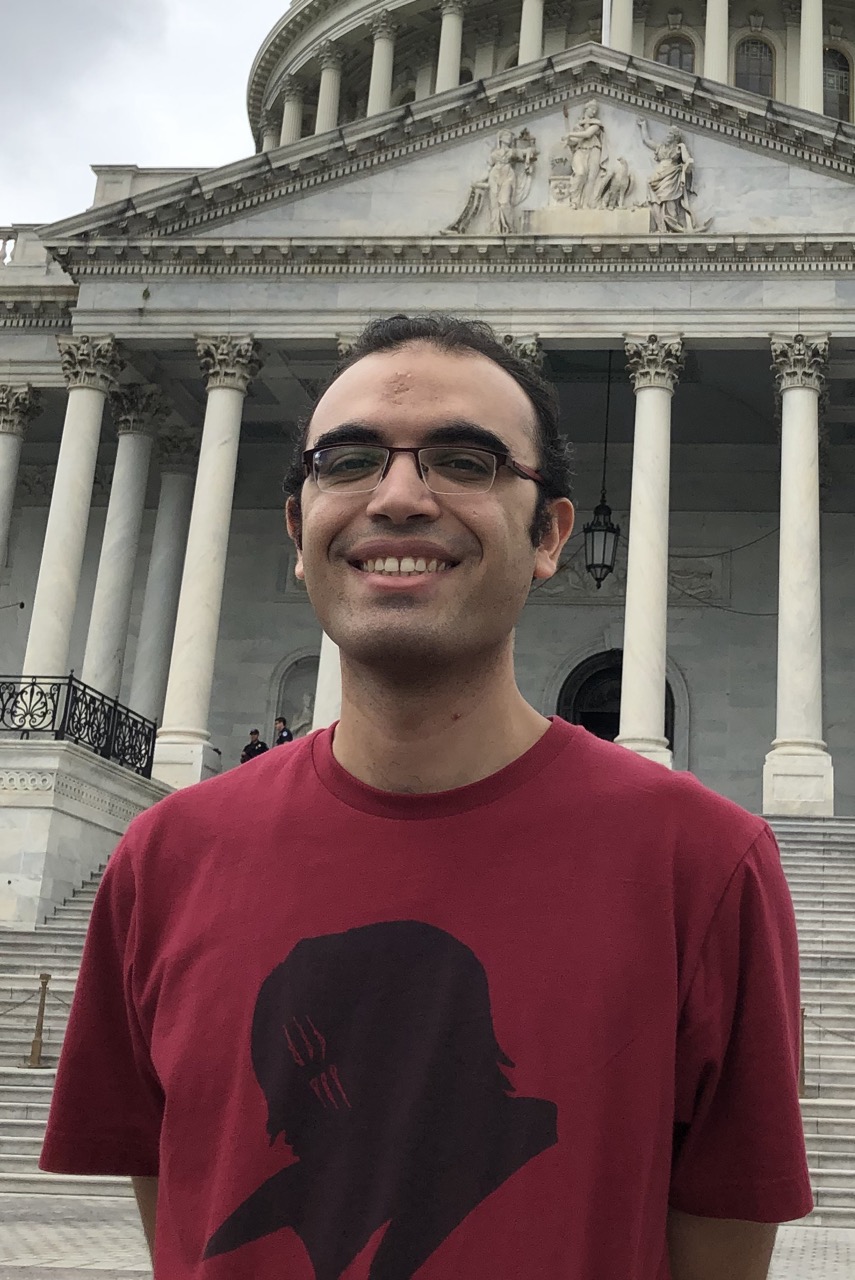The Community Spotlight celebrates the diversity of expertise, perspectives, and experiences of our community members. In this post we sit down with Karim Amer, a winner of the MagNet: Model the Geomagnetic Field and Wind-dependent Variables, and head of an AgriTech startup based in Egypt.

Name: Karim Amer¶
Hometown: Cairo, Egypt¶
To get started, tell us a little about yourself.
I have lived in Cairo, Egypt all my life, except for one year when I worked at Siemens Healthineers as a research intern in the United States. I am currently the head of AI/ML at Visual and AI Solutions (VAIS), a startup that develops novel Artificial Intelligence and visual computing technologies for the AgriTech market.
I like to join data science competitions whenever I have a chance. I have achieved top 4 positions in 5 different challenges on multiple data science platforms. Outside work, I love watching Anime and trying cuisines from different countries.
Data science is a broad field. What areas are you particularly interested in?
I started my career in research working on computer vision applications especially for Earth Observation and Medical Imaging.
Deep Learning (DL) was important for all these projects to succeed and that made me realize its potential and the degrees of freedom it has, which can enable solving other types of problems too.
Afterwards, I focused on extending DL usability to other areas like Bioinformatics, Geophysics and Climate Change by tackling various data science challenges and achieving top rankings in many of them. My main focus now is developing DL-based products to improve the agricultural cycle.
Is there a particular DrivenData challenge you’ve enjoyed working on?
I liked working on the “Wind-dependent Variables: Predict Wind Speeds of Tropical Storms” challenge since its output can have a direct impact on people’s lives. The data also was unique and large enough to allow innovations using Deep Learning. Given the nature of the data, I believed a spatio temporal model was probably the best solution. However, I didn’t have enough resources to do so.
Therefore, I split my solution into two parts where the first part processed a sequence of images for a storm on a short term (3-6 images only) and the second part looked into long term predictions from the first part (25-35 samples) in order to assess the storm speed at the end. I used an ensemble of CNNs in the first part and an ensemble of sequence models in the second part.
Did you have any domain expertise, or any particular insights from exploring the data, that helped you solve the problem?
Actually, no. This was my first time working on such a problem and that is the beauty of knowing Neural Networks, as it will help you solve different problems without the need for strong domain knowledge.
What was the most important tip or trick you used to solve the problem?
Setting up the right validation strategy was crucial at the beginning of the competition. I believe it is one of the most important decisions in which anyone should invest time, as it will directly affect the solution development and it gets difficult to correct during the competition.
What advice would you give to your younger self?
Give yourself a break from time to time as continuous work load will have a bad effect on your mental and physical health. Indulge in things and activities that you enjoy like traveling, trying out new food recipes and visiting friends. Try not to stress a lot about work. Sometimes when you are stuck on a problem, the best thing you can do is to take some rest and relax to clear your head and take on the problem with a fresh mindset.
What hurdles have you had to overcome to become a data scientist? What advice would you give to others facing the same challenges?
It was difficult for me to secure an internship in a prominent company during my graduate study coming from Nile university that isn’t well known on the global level and doesn’t have recruitment camps from these companies. I got rejected many times until I landed an opportunity at Siemens Healthineers.
One way to overcome this issue is to improve your profile and show the quality of your work in order to convince the recruiters with your skills. There are a lot of ways to do so including: working on research projects and publishing your work in scientific conferences, taking part in data science competitions and working on open source projects. In addition, try to extend your network by reaching out to your professors at the university and field experts in general (either online or by attending conferences and meetups) and asking them for help. From my experience, people will help you if you are respectful and have good skills and knowledge, especially since a lot of them were in the same situation.
If you could run a competition, what would it be about?
I hope I can run a competition to design optimizers that can make Neural Networks converge in the least training iterations possible. I believe the current long training time of Neural networks is a big hindrance especially to people with low resources and hopefully this challenge can push the boundaries in this area.
Where can the community find you online?
Thanks to Karim (@KarimAmer) for sharing his thoughts on work, life, and data science! We are excited to feature more great community members. If you think you or someone you know would be a great addition to a future Community Spotlight, let us know!
 LABS
LABS